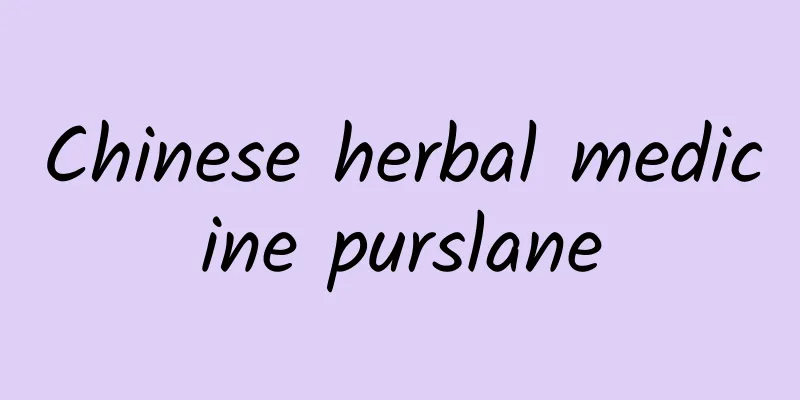The efficacy and function of white pine cone

|
White pine cones are a traditional Chinese medicinal material. There are precedents of using white pine cones to treat diseases in ancient times, so we can eat them with confidence. Next, I will mainly introduce to you the effects of white pine cones. [Alias] Pine cone, pine ball, pine cone, and pine tree walnut (Shanxi Chinese Herbal Medicine). [Source] It is the cone of the white pine of the Pinus family. Harvest in spring and autumn and sun-dried. [Original form] White pine, also known as three-needle pine and white bone pine. Evergreen tree, up to 30 meters tall. The bark is gray-green or light gray-brown, the inner bark is white, cracked into irregular thin flakes and falls off; the annual branches are gray-green and hairless; the winter buds are reddish-brown. The needles are in bundles of 3, coarse and hard, 5 to 10 cm long, 1.5 to 2 mm wide, with stomatal lines on both the bottom and top of the leaves; the leaf sheaths fall off early. Flowers are unisexual; male inflorescences are sessile, ovate-oblong or cylindrical, growing at the base or top of new branches, mostly gathered into spikes, with base covered with scales; female inflorescences are 1 to several in number and growing at the tip or top of new branches, developing into cones after fertilization. The cones (i.e. pine cones) are ovate, 5 to 7 cm long, light yellowish brown when mature, with thick seed scales at the tip, mostly diamond-shaped shields with transverse ridges, and the hilum born in the center of the shields with thorny tips; the seeds are obovate, about 1 cm long, with seed wings 5 mm long, with joints, and easy to fall off. Fruiting period is from June to October. [Habitat distribution] It grows in mountainous forest areas and likes light. It is distributed in Shanxi, Henan, Shaanxi, Gansu, northern Sichuan and western Hubei, and is cultivated in Liaoning, Hebei, Shandong and Jiangsu. [Chemical composition] Pine cones contain volatile oils, saponins, phenols, etc. The content of volatile oil varies greatly with the collection season, storage method and length of time. The content of volatile oil in freshly collected pine cones is about 1%, which can be reduced to 0.2% after drying. The volatile oil contains limonene and so on. 【Nature and flavor】 "Shanxi Chinese Herbal Medicine": "bitter, warm." 【Function】 "Shanxi Chinese Herbal Medicine": "It can relieve cough, eliminate phlegm, reduce inflammation and relieve asthma. It can treat chronic tracheitis, cough, shortness of breath and spitting white foamy sputum." [Usage and Dosage] For oral use: decoct in water, 1 to 2 liang. [Clinical Application] Treatment of chronic bronchitis: According to a systematic observation of more than 2,000 cases, the short-term effective rate of a course of treatment is around 80%, and the clinical control and significant efficiency account for about 15 to 20%. During the treatment, white pine cones were used in combination with sulfamethoxazole and sulfamethoxazole synergists for a whole year of observation and treatment. The results showed that the efficacy was improved compared with a single prescription. The effective rate of 168 cases reached more than 90%, of which 51% were clinically controlled and showed significant effects. The better effects are relieving cough and expectorant, followed by relieving asthma, and the anti-inflammatory effect is not obvious. Side effects include dry mouth, nausea, dizziness, and stomach upset. Improving the dosage form and using extracts can alleviate the problem. No obvious toxic reactions were observed in animal experiments. Usage: Take 4 liang (10 liang system) of mature white pine cones, wash and boil them in water twice, mix the medicinal liquid and boil it into 400 ml, take 100 ml each time, twice a day, after meals. A course of treatment is 10 days. In addition to decoctions, it has been made into injections, tablets, extracts, pills, capsules, volatile oil emulsions, etc. [Remarks] The cones of the same genus Pinus massoniana are called red pine cones , which can also be used to treat chronic bronchitis. Take 4 liang (10 liang) of red pine cones (excluding pine seeds), wash them, soak them in clean water for 4 to 8 hours, add 2000 ml of water, simmer until 200 ml remains, filter, add water to the residue and boil again, mix the two decoctions, which is the 2-day dosage for adults. Take twice a day, 100 ml each time, in the morning and evening after meals. Or soak the pine cones, dry them, and grind them into fine powder. Take 1 qian each time, half an hour after breakfast and dinner. 424 cases were clinically observed (10 cases using powder). After one course of treatment (10 days), 23 cases were under short-term control, 82 cases were significantly effective, 211 cases were improved, 108 cases were ineffective, and the total effective rate was 74.5%. 【Excerpt】 《*Dictionary》 [Source] From "Shanxi Chinese Herbal Medicine". The above is an introduction to the Chinese medicinal herb white pine cone. For medicinal herbs that we don't understand, we should learn more about them so that we can make full use of them in our lives and not be at a loss. |
<<: The efficacy and function of Melaleuca oil
>>: The efficacy and function of cypress oil
Recommend
The efficacy and function of the yellow flower lice hemp head
Friends who don’t know about the Yellow Flower Li...
Effects and functions of Zhejiang Passerella
Many people know that Zhejiang Glehnia littoralis...
Are you more likely to have mood disorders in spring? These factors may be affecting you
On a spring day when the weather is still cold an...
Why do some animals have round faces? Why does an owl have a "cat head"?
In this world, some animals are loved and paid at...
Where does a spacecraft go when it retires?
Recently, the Tianzhou-3 cargo spacecraft re-ente...
What are the effects and functions of Angelica and Astragalus
Angelica and Astragalus are two different Chinese...
What are the effects and functions of sunken wood?
In fact, sunken wood is not a single entity, but ...
She is rooted in isotope geochemistry and is determined to explore habitable planets outside the earth!
In the vast universe, various elements are consta...
What is the medicinal value of toon flowers?
Toona sinensis flowers are considered a Chinese h...
How to eat and how much to use musk
There are many Chinese medicinal materials that a...
The efficacy and function of white flowered jellyfish
The white flowered jellyfish is a familiar medici...
Why did those flowers that are said to be "immortal" die because of you?
Expert of this article: Li Ting, Master of Plant ...
Tomatoes are becoming less and less tasty. Is it my illusion? You will understand after reading this!
If you still remember the tomatoes you ate as a c...
The efficacy and function of tiger grass
Tiger grass is a kind of traditional Chinese medi...
The efficacy and function of burdock enzyme
In a person's life, there will be more or les...









